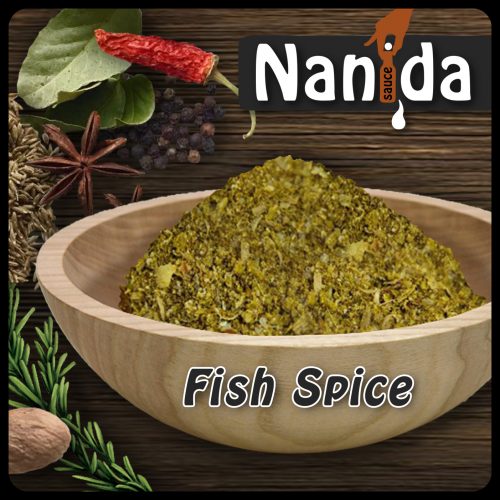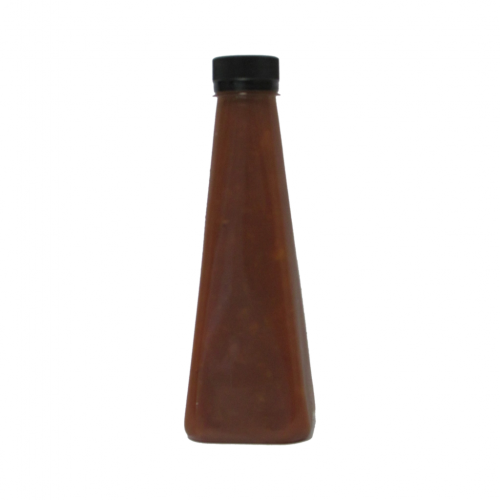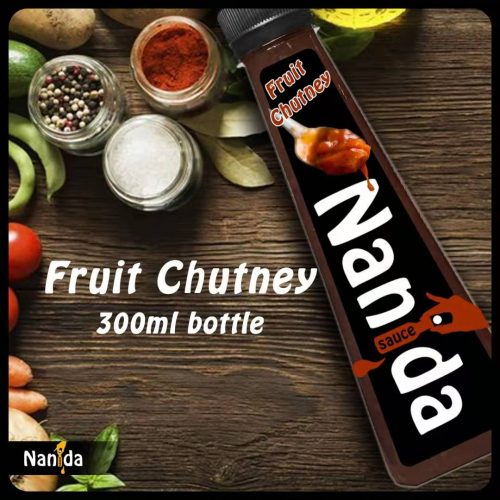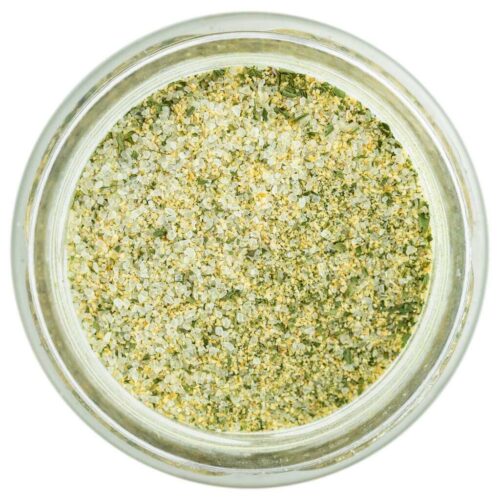-
Out of stock
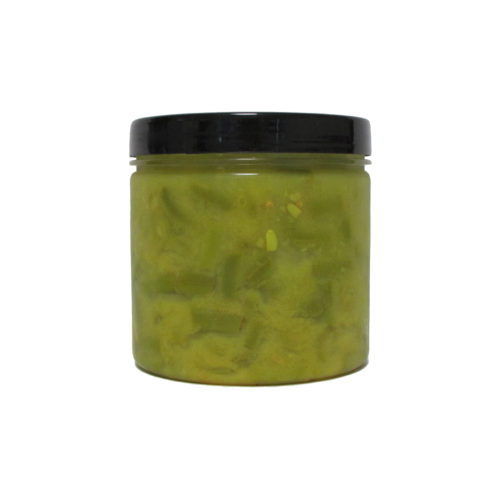
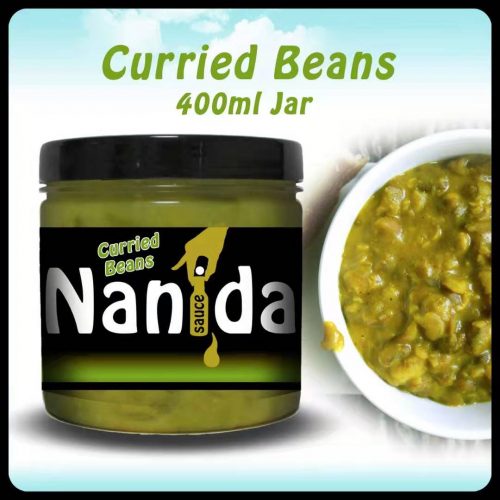 Add a fresh, flavorful staple to your culinary creations with the South African styled Green Beans. These pre-sliced green beans are a wonderful compliment to many casseroles and entrees or simply as a health-conscious side dish to your home cooked meal. Nanida promises freshness and quality always at a great value.
Add a fresh, flavorful staple to your culinary creations with the South African styled Green Beans. These pre-sliced green beans are a wonderful compliment to many casseroles and entrees or simply as a health-conscious side dish to your home cooked meal. Nanida promises freshness and quality always at a great value. -

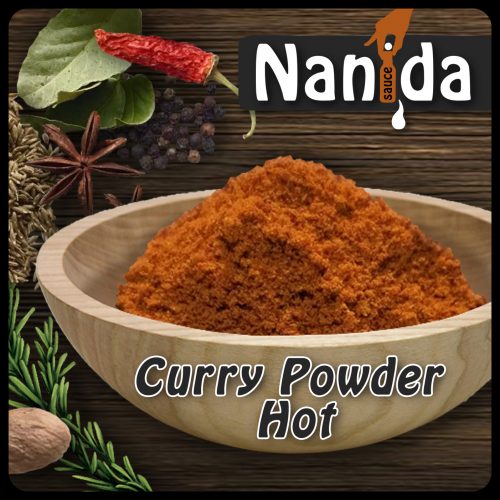 Curry powder is a mixture of up to 20 different herbs and spices, including the commonly used: cardamom, chiles, cinnamon, cloves, coriander, cumin, fennel, fenugreek, mace, nutmeg, pepper, poppy seeds, sesame seeds, saffron, tamarind and turmeric (which gives curry its characteristic golden color). Curry powder is a blend of many spices, and comes in almost infinite varieties Curry powder is largely composed of turmeric. The word "curry" is widely believed to be a corruption of the Tamil word kari, variously meaning something like sauce, cooked vegetables or meat. Through the mass exportation of the condiment to the western table, throughout Europe and North and South America, Curry powder was then largely popularized during the nineteenth and twentieth centuries. In Indian cooking curry is freshly ground each day (making it far more pungent and flavorful than the mixes sold in the store). Each curry powder can have different component spices, in differing amounts--making each curry blend unique. Curry powder is used in soups, and of course, curries. It is also used as a thickening agent in fish and meat dishes. Curry powder also can be used simply to accent a normal meal: pasta, stew and spaghetti. Use in meats, poultry, sauerkraut, eggs, fish, vegetables, tomato juice. Curry powder is also used in dips, chicken salad, and fruit salads.
Curry powder is a mixture of up to 20 different herbs and spices, including the commonly used: cardamom, chiles, cinnamon, cloves, coriander, cumin, fennel, fenugreek, mace, nutmeg, pepper, poppy seeds, sesame seeds, saffron, tamarind and turmeric (which gives curry its characteristic golden color). Curry powder is a blend of many spices, and comes in almost infinite varieties Curry powder is largely composed of turmeric. The word "curry" is widely believed to be a corruption of the Tamil word kari, variously meaning something like sauce, cooked vegetables or meat. Through the mass exportation of the condiment to the western table, throughout Europe and North and South America, Curry powder was then largely popularized during the nineteenth and twentieth centuries. In Indian cooking curry is freshly ground each day (making it far more pungent and flavorful than the mixes sold in the store). Each curry powder can have different component spices, in differing amounts--making each curry blend unique. Curry powder is used in soups, and of course, curries. It is also used as a thickening agent in fish and meat dishes. Curry powder also can be used simply to accent a normal meal: pasta, stew and spaghetti. Use in meats, poultry, sauerkraut, eggs, fish, vegetables, tomato juice. Curry powder is also used in dips, chicken salad, and fruit salads. -

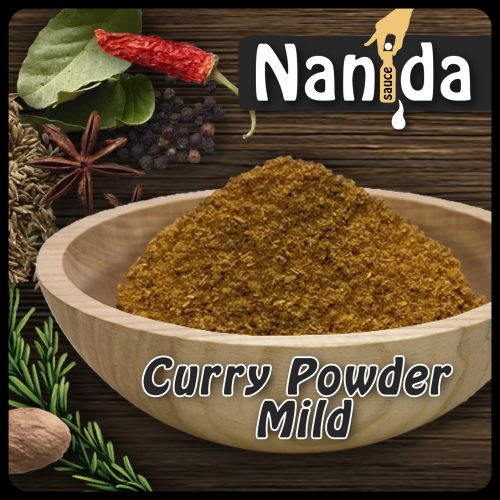 Curry powder is a mixture of up to 20 different herbs and spices, including the commonly used: cardamom, chiles, cinnamon, cloves, coriander, cumin, fennel, fenugreek, mace, nutmeg, pepper, poppy seeds, sesame seeds, saffron, tamarind and turmeric (which gives curry its characteristic golden color). Curry powder is a blend of many spices, and comes in almost infinite varieties Curry powder is largely composed of turmeric. The word "curry" is widely believed to be a corruption of the Tamil word kari, variously meaning something like sauce, cooked vegetables or meat. Through the mass exportation of the condiment to the western table, throughout Europe and North and South America, Curry powder was then largely popularized during the nineteenth and twentieth centuries. In Indian cooking curry is freshly ground each day (making it far more pungent and flavorful than the mixes sold in the store). Each curry powder can have different component spices, in differing amounts--making each curry blend unique. Curry powder is used in soups, and of course, curries. It is also used as a thickening agent in fish and meat dishes. Curry powder also can be used simply to accent a normal meal: pasta, stew and spaghetti. Use in meats, poultry, sauerkraut, eggs, fish, vegetables, tomato juice. Curry powder is also used in dips, chicken salad, and fruit salads.
Curry powder is a mixture of up to 20 different herbs and spices, including the commonly used: cardamom, chiles, cinnamon, cloves, coriander, cumin, fennel, fenugreek, mace, nutmeg, pepper, poppy seeds, sesame seeds, saffron, tamarind and turmeric (which gives curry its characteristic golden color). Curry powder is a blend of many spices, and comes in almost infinite varieties Curry powder is largely composed of turmeric. The word "curry" is widely believed to be a corruption of the Tamil word kari, variously meaning something like sauce, cooked vegetables or meat. Through the mass exportation of the condiment to the western table, throughout Europe and North and South America, Curry powder was then largely popularized during the nineteenth and twentieth centuries. In Indian cooking curry is freshly ground each day (making it far more pungent and flavorful than the mixes sold in the store). Each curry powder can have different component spices, in differing amounts--making each curry blend unique. Curry powder is used in soups, and of course, curries. It is also used as a thickening agent in fish and meat dishes. Curry powder also can be used simply to accent a normal meal: pasta, stew and spaghetti. Use in meats, poultry, sauerkraut, eggs, fish, vegetables, tomato juice. Curry powder is also used in dips, chicken salad, and fruit salads. -

 Curry powder is a mixture of up to 20 different herbs and spices, including the commonly used: cardamom, chiles, cinnamon, cloves, coriander, cumin, fennel, fenugreek, mace, nutmeg, pepper, poppy seeds, sesame seeds, saffron, tamarind and turmeric (which gives curry its characteristic golden color). Curry powder is a blend of many spices, and comes in almost infinite varieties Curry powder is largely composed of turmeric. The word "curry" is widely believed to be a corruption of the Tamil word kari, variously meaning something like sauce, cooked vegetables or meat. Through the mass exportation of the condiment to the western table, throughout Europe and North and South America, Curry powder was then largely popularized during the nineteenth and twentieth centuries. In Indian cooking curry is freshly ground each day (making it far more pungent and flavorful than the mixes sold in the store). Each curry powder can have different component spices, in differing amounts--making each curry blend unique. Curry powder is used in soups, and of course, curries. It is also used as a thickening agent in fish and meat dishes. Curry powder also can be used simply to accent a normal meal: pasta, stew and spaghetti. Use in meats, poultry, sauerkraut, eggs, fish, vegetables, tomato juice. Curry powder is also used in dips, chicken salad, and fruit salads.
Curry powder is a mixture of up to 20 different herbs and spices, including the commonly used: cardamom, chiles, cinnamon, cloves, coriander, cumin, fennel, fenugreek, mace, nutmeg, pepper, poppy seeds, sesame seeds, saffron, tamarind and turmeric (which gives curry its characteristic golden color). Curry powder is a blend of many spices, and comes in almost infinite varieties Curry powder is largely composed of turmeric. The word "curry" is widely believed to be a corruption of the Tamil word kari, variously meaning something like sauce, cooked vegetables or meat. Through the mass exportation of the condiment to the western table, throughout Europe and North and South America, Curry powder was then largely popularized during the nineteenth and twentieth centuries. In Indian cooking curry is freshly ground each day (making it far more pungent and flavorful than the mixes sold in the store). Each curry powder can have different component spices, in differing amounts--making each curry blend unique. Curry powder is used in soups, and of course, curries. It is also used as a thickening agent in fish and meat dishes. Curry powder also can be used simply to accent a normal meal: pasta, stew and spaghetti. Use in meats, poultry, sauerkraut, eggs, fish, vegetables, tomato juice. Curry powder is also used in dips, chicken salad, and fruit salads. -

 Curry powder is a mixture of up to 20 different herbs and spices, including the commonly used: cardamom, chiles, cinnamon, cloves, coriander, cumin, fennel, fenugreek, mace, nutmeg, pepper, poppy seeds, sesame seeds, saffron, tamarind and turmeric (which gives curry its characteristic golden color). Curry powder is a blend of many spices, and comes in almost infinite varieties Curry powder is largely composed of turmeric. The word "curry" is widely believed to be a corruption of the Tamil word kari, variously meaning something like sauce, cooked vegetables or meat. Through the mass exportation of the condiment to the western table, throughout Europe and North and South America, Curry powder was then largely popularized during the nineteenth and twentieth centuries. In Indian cooking curry is freshly ground each day (making it far more pungent and flavorful than the mixes sold in the store). Each curry powder can have different component spices, in differing amounts--making each curry blend unique. Curry powder is used in soups, and of course, curries. It is also used as a thickening agent in fish and meat dishes. Curry powder also can be used simply to accent a normal meal: pasta, stew and spaghetti. Use in meats, poultry, sauerkraut, eggs, fish, vegetables, tomato juice. Curry powder is also used in dips, chicken salad, and fruit salads.
Curry powder is a mixture of up to 20 different herbs and spices, including the commonly used: cardamom, chiles, cinnamon, cloves, coriander, cumin, fennel, fenugreek, mace, nutmeg, pepper, poppy seeds, sesame seeds, saffron, tamarind and turmeric (which gives curry its characteristic golden color). Curry powder is a blend of many spices, and comes in almost infinite varieties Curry powder is largely composed of turmeric. The word "curry" is widely believed to be a corruption of the Tamil word kari, variously meaning something like sauce, cooked vegetables or meat. Through the mass exportation of the condiment to the western table, throughout Europe and North and South America, Curry powder was then largely popularized during the nineteenth and twentieth centuries. In Indian cooking curry is freshly ground each day (making it far more pungent and flavorful than the mixes sold in the store). Each curry powder can have different component spices, in differing amounts--making each curry blend unique. Curry powder is used in soups, and of course, curries. It is also used as a thickening agent in fish and meat dishes. Curry powder also can be used simply to accent a normal meal: pasta, stew and spaghetti. Use in meats, poultry, sauerkraut, eggs, fish, vegetables, tomato juice. Curry powder is also used in dips, chicken salad, and fruit salads. -
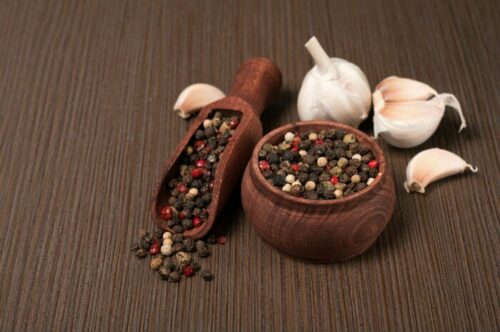
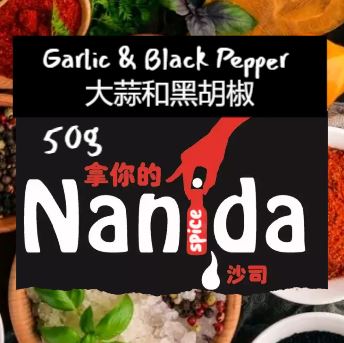
Black pepper and garlic are often used together in cooking, and they can also have some health benefits when consumed together. Here are a few potential effects of taking black pepper with garlic:
- Improved digestion: Black pepper contains a compound called piperine, which can increase the bioavailability of certain nutrients, including those found in garlic. This can help to improve digestion and nutrient absorption.
- Reduced inflammation: Both black pepper and garlic contain compounds that have anti-inflammatory properties. Consuming them together may help to reduce inflammation in the body and alleviate related symptoms.
- Enhanced immune function: Garlic is known for its immune-boosting properties, and black pepper may help to enhance these effects. Some studies have suggested that consuming black pepper with garlic can help to support immune function and reduce the risk of infections.
- Improved nutrient absorption: Piperine in black pepper has been shown to enhance the absorption of many nutrients, including some found in garlic. This can help to ensure that your body is getting the maximum benefit from the nutrients you consume.
It's important to note that while black pepper and garlic may have some health benefits when consumed together, they should not be relied upon as a sole treatment for any health condition. Additionally, it's always a good idea to speak with a healthcare provider before making any significant changes to your diet or supplement routine.
-
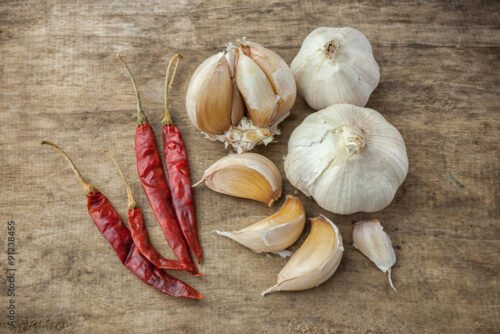
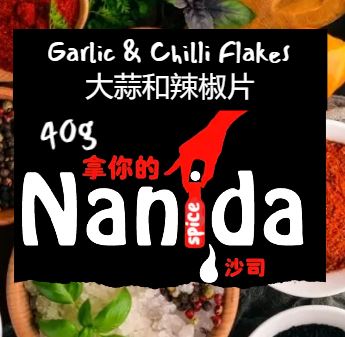 Add a burst of fiery flavor to your dishes with chilli flakes, a versatile and popular spice that brings the heat to your culinary creations. Sprinkle them into sauces, soups, stews, and marinades to infuse your dishes with a tantalizing heat. They can also be used as a finishing touch, adding a vibrant pop of color and a fiery flavor to pizzas, pastas, roasted vegetables, and more.
Add a burst of fiery flavor to your dishes with chilli flakes, a versatile and popular spice that brings the heat to your culinary creations. Sprinkle them into sauces, soups, stews, and marinades to infuse your dishes with a tantalizing heat. They can also be used as a finishing touch, adding a vibrant pop of color and a fiery flavor to pizzas, pastas, roasted vegetables, and more. -
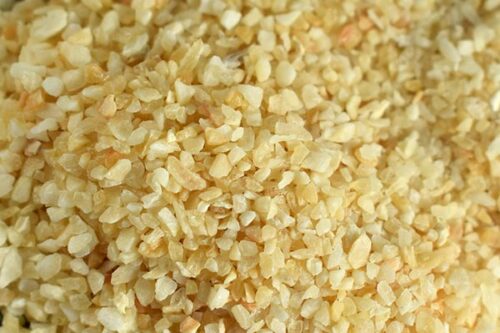
 You can also use garlic flakes to season eggs, dips, popcorn or any dish you think could do with a savoury kick. 4. Magnificent Marinades: Marinate your favourite meats and seafood with a blend of garlic flakes, herbs and olive oil before grilling for tender, succulent dishes with an explosion of taste.
You can also use garlic flakes to season eggs, dips, popcorn or any dish you think could do with a savoury kick. 4. Magnificent Marinades: Marinate your favourite meats and seafood with a blend of garlic flakes, herbs and olive oil before grilling for tender, succulent dishes with an explosion of taste.


